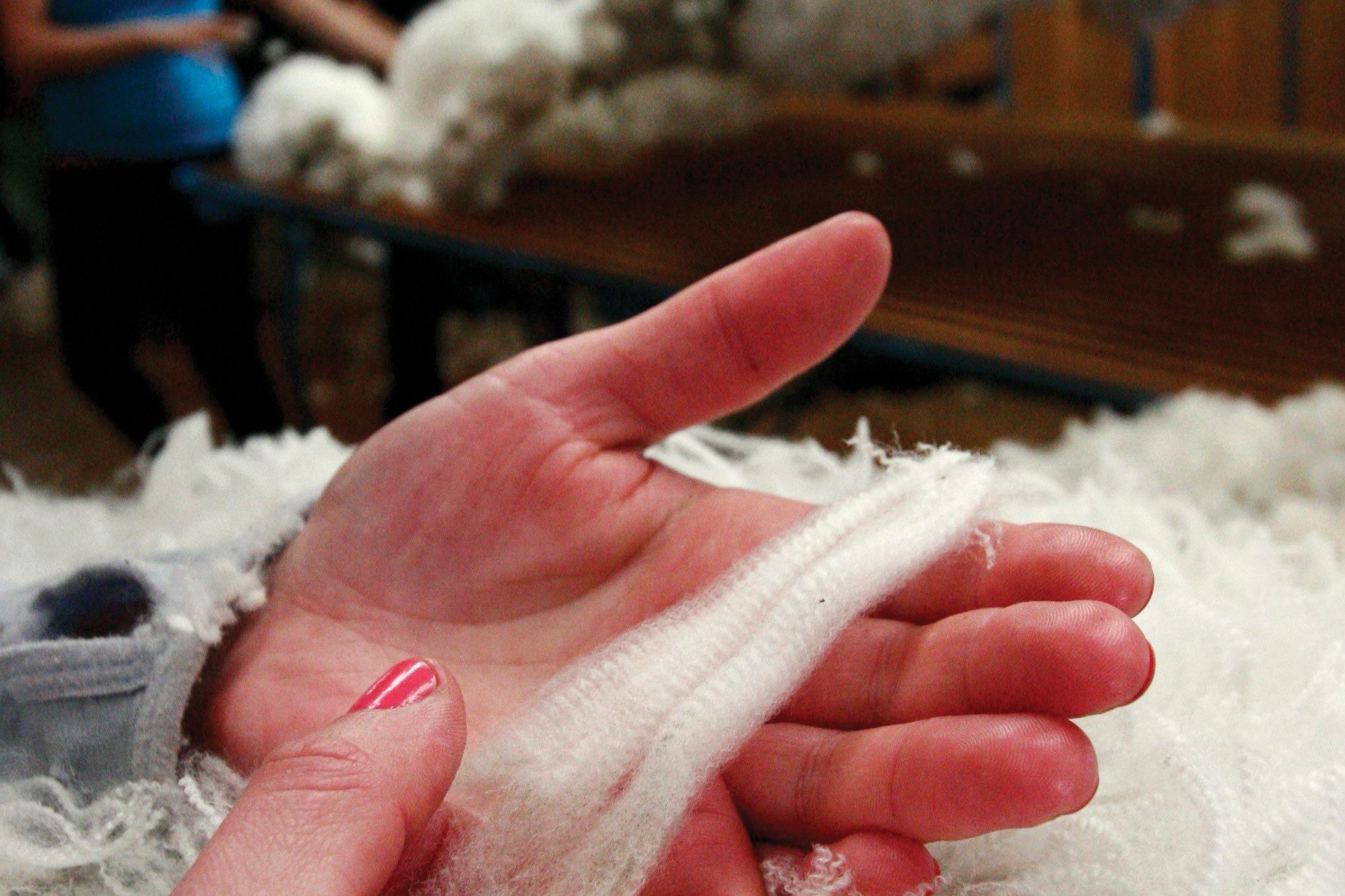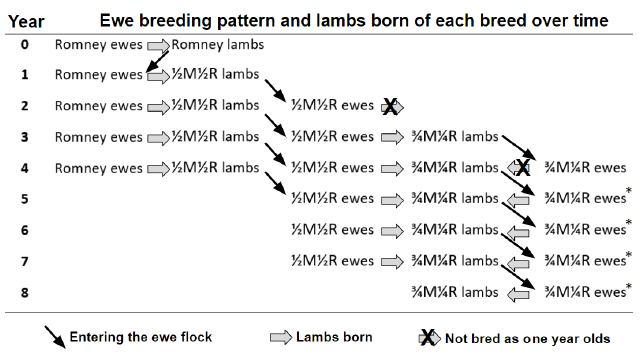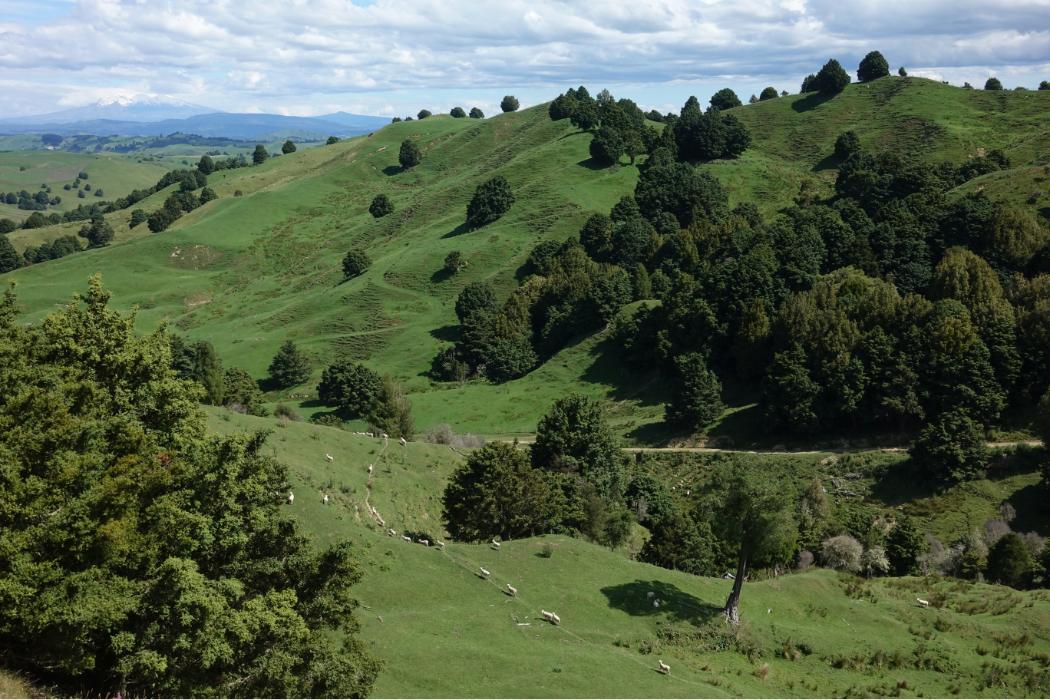Focus on performance
Jo Cuttance reports on a programme crossing Merino rams and Romney ewes to lower the wool micron measure.

Jo Cuttance reports on a programme crossing Merino rams and Romney ewes to lower the wool micron measure.
Taking the best qualities from a Romney and a Merino and combining them has the potential to produce an all-round crossbred sheep, which could increase profitability.
With falling prices for coarse wool and increasing shearing costs, producing medium wool through crossbreeding Romney ewes with Merino sires could help farmers improve returns.
Prices for medium wool between >24 and <30 micron and fine wool at <24 micron have risen, increasing income for farmers who can produce this type of wool. New Zealand’s national flock produces mostly coarse wool and only 15% and 8% of wool produced is categorised as medium and fine respectively.

Merino-Romney crossbreeding studies indicate that within a few generations the average micron of an initially purebred Romney flock can be reduced through crossbreeding with Merino sires. This would potentially increase the wool income while retaining the higher lamb production of the established Romney flock.
As part of the Wool Unleashed Primary Growth Partnership Programme, Associate Professor Peter Tozer, Dr Lydia Farrell and Professor Paul Kenyon analysed data for transitioning a simulation Romney flock to a crossbred Merino (¾ M ¼ R) flock for producing finer wool over a 13-year transitioning period.
The researchers recommended farmers who were considering grading up from a Romney to ¾ M ¼ R flock focus on maintaining lambing performance in the Merino-Romney flocks. There needed to be careful selection of Merino rams, and replacement Merino-Romney ewe lambs needed to be selected according to their wool fibre diameter.
Before starting the transitioning process farmers needed to consider sheep and wool prices and the risk of greater health issues with Merino-Romney crossbred animals.
The researchers acknowledged there were uncertainties about the productivity, management, and health issues of Merino-Romney flocks. This was because Merinos had specific management requirements, such as grazing style, potential health issues such as footrot and facial eczema, and retention of lambs over winter. Further study was needed.
The researchers used a model based on an “average” East Coast North Island hill country farm. In year one, Romney ewes with 36 micron wool were bred with Merino rams with 21 micron wool to produce a ½ M ½ R lamb with 28 micron wool. This first cross was retained for breeding and the ewes were mated to Merino rams to first lamb at two years old, producing ¾ M ¼ R lamb with 24.3 micron wool. (See diagram).
The ¾ M ¼ R ewe lambs retained for breeding were mated to ¾ M ¼ R or similar rams to maintain the medium of 24 micron of the mature flock.
It was assumed 65% of ewe lambs with the finest wool after wool testing would be kept. The increasing wool fibre diameter of ewes as they aged in the flock was also considered. Flock average fibre diameter was determined by both ewe lamb selection intensity and flock age structure.
Lambing performance for Merino crossbreds was uncertain, but previous research showed lambing performance decreased with higher proportions of Merino.
When analysing data, the researchers tested several scenarios where lamb and wool prices were varied by plus or minus 10% of the 2017/2018 base values.
Once grading up to Merino was complete, the researchers looked at some comparisons with the baseline Romney flock.
The ¾ M ¼ R ewes lambing percentage 114% compared to 132% for the purebred Romney ewes, resulting in lower lamb revenue. Even though wool production was lower in the Merino-cross class, the wool price differential meant the wool revenue was significantly higher for the Merino-cross ewe flock.
While grading up to Merino, there were fluctuations in the cost operating surplus (COS), from the baseline Romney sheep enterprise COS of $390/ha in year zero. A COS of less than $300/ha was predicted in years two, five and seven. This was because there were high proportions of young, unproductive stock on farm. The researchers found this could be challenging for those paying debt and might require deferred capital investment in those years.
The researchers suggested farmers could look at different options to achieve higher-value wool than was modelled in this study.
Other options included using Merino rams with a wool diameter less than 21 micron and extending the transition period by having a tighter criteria for selecting Merino-Romney replacement ewe lambs. Another option was to breed part of the Romney flock with Merino sires, while maintaining a flock of coarse wool-producing ewes with higher lamb production.
Alternatively, farmers could take advantage of medium wool prices and use Merino rams as terminal sires across Romney, or similar coarse wool producing flocks. The Merino-Romney crossbred offspring could remain on farm over winter to shear before slaughter in spring with lamb carcase premiums.
To read more visit www.sciencedirect.com/science/article/abs/pii/S0921448820301851




